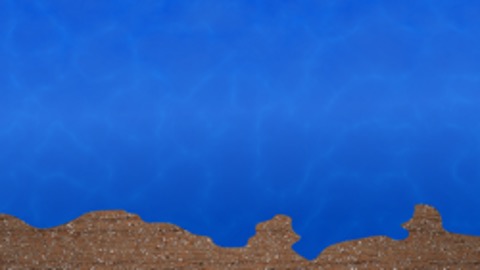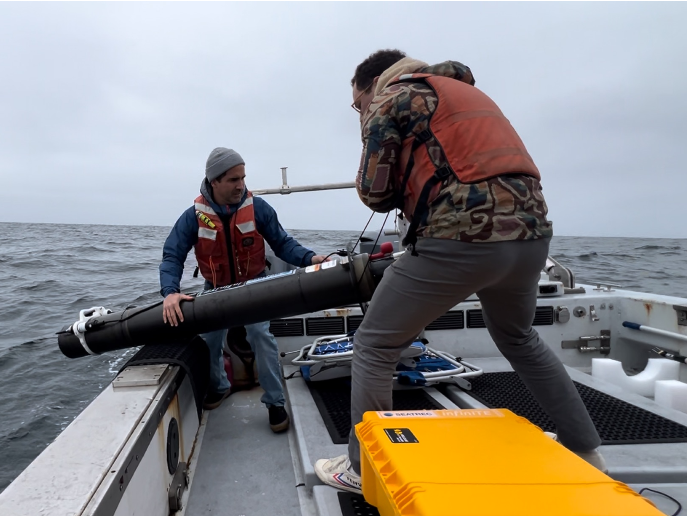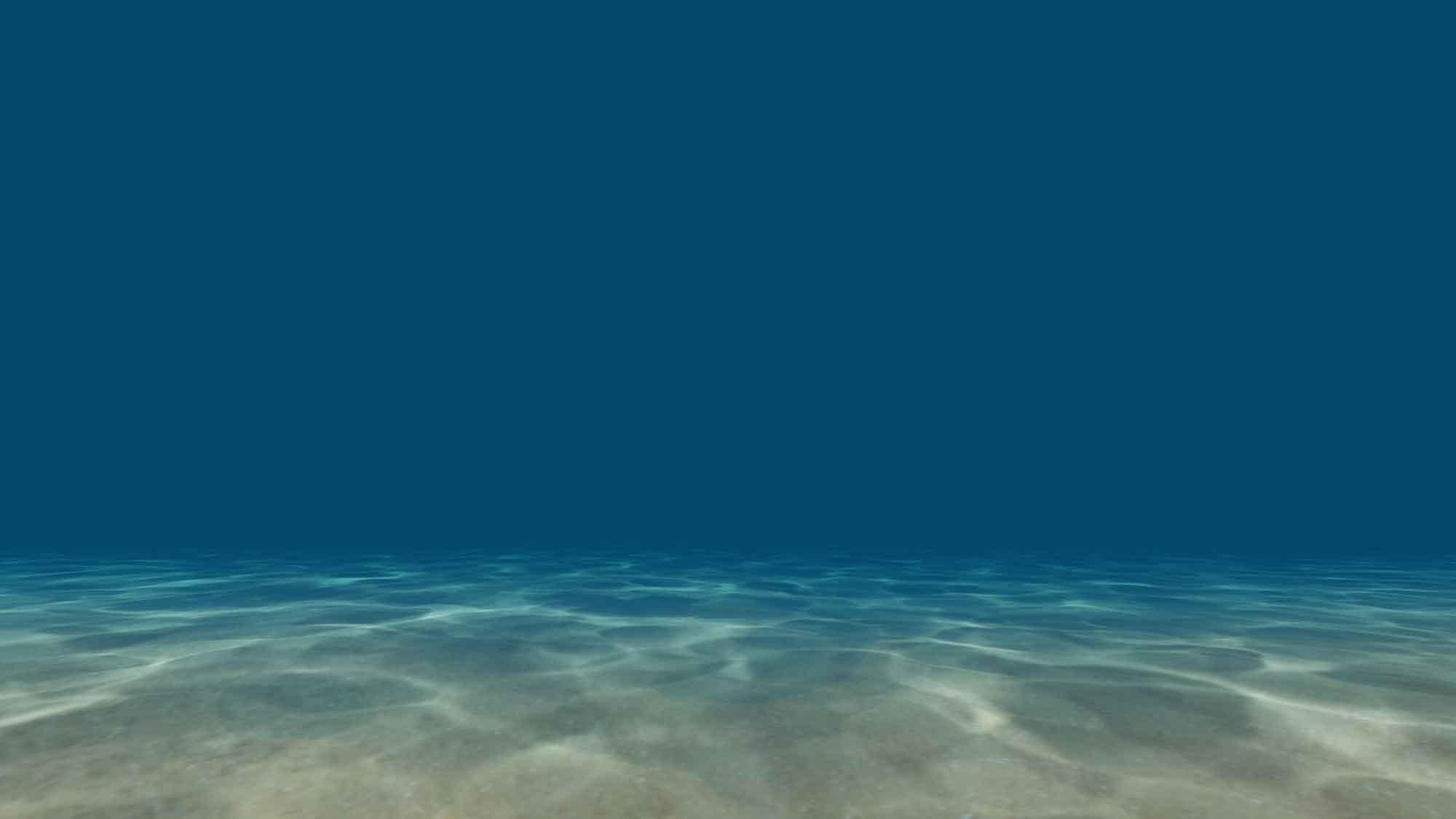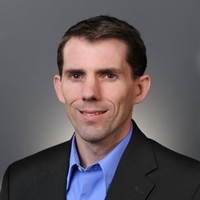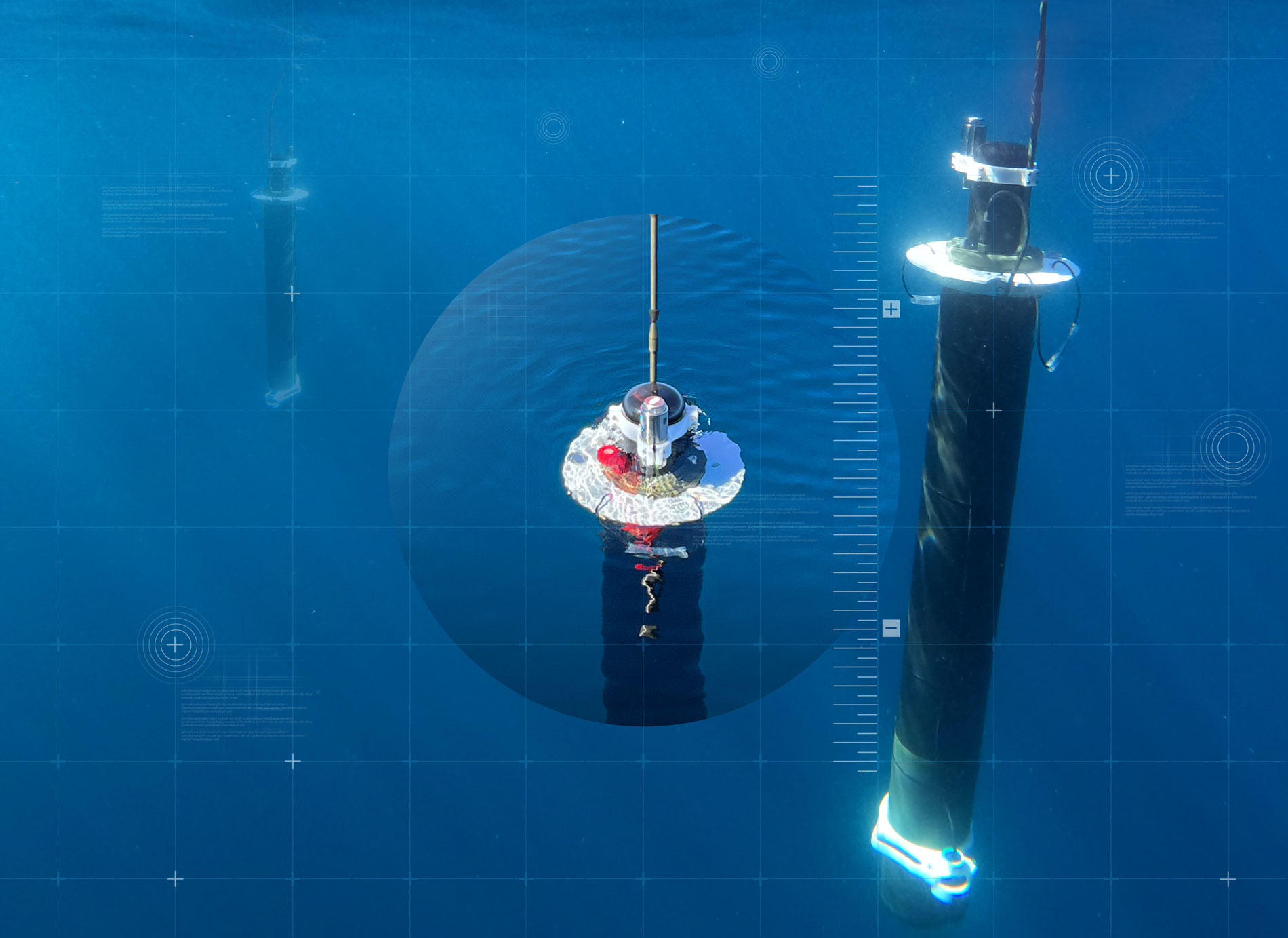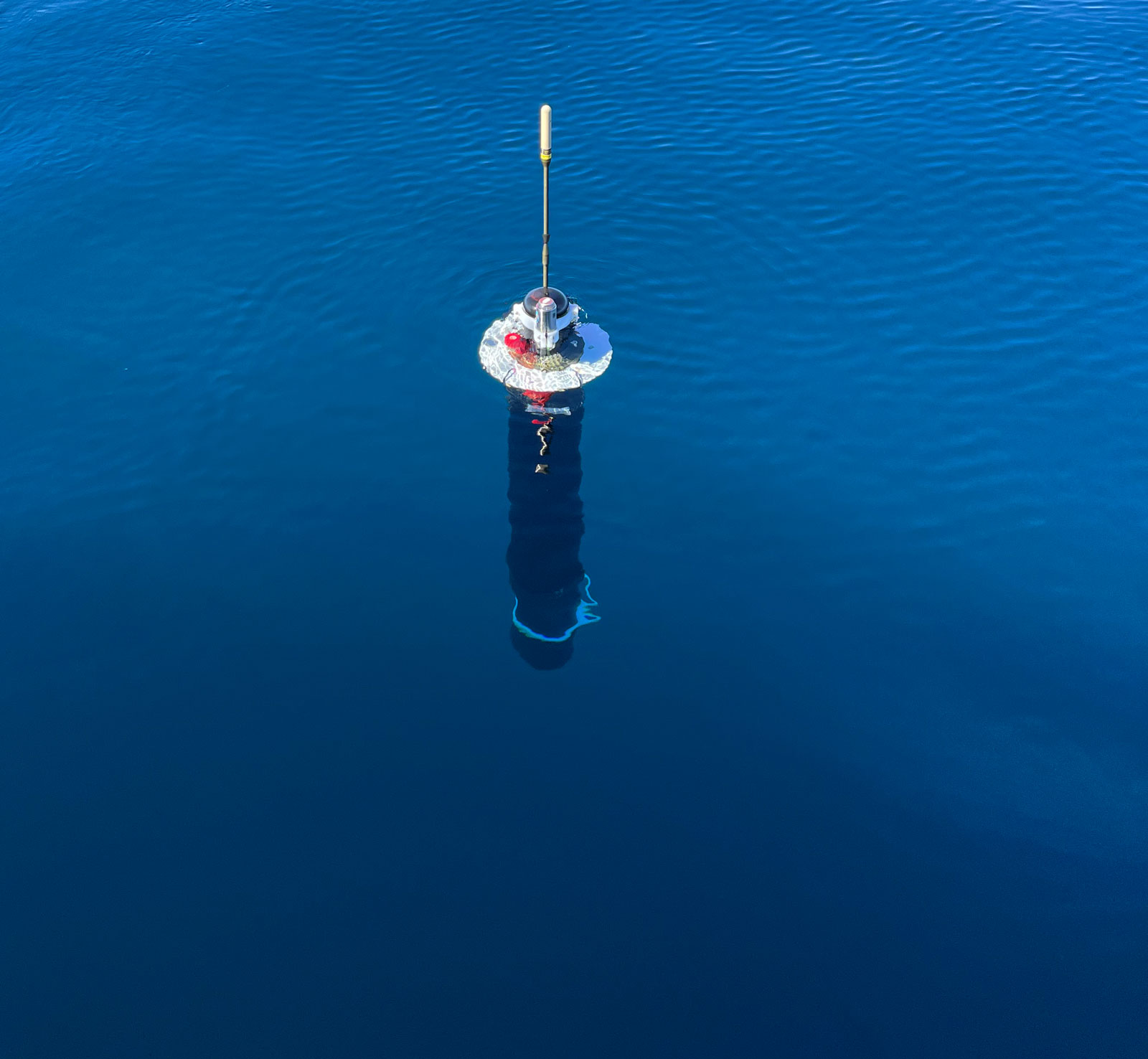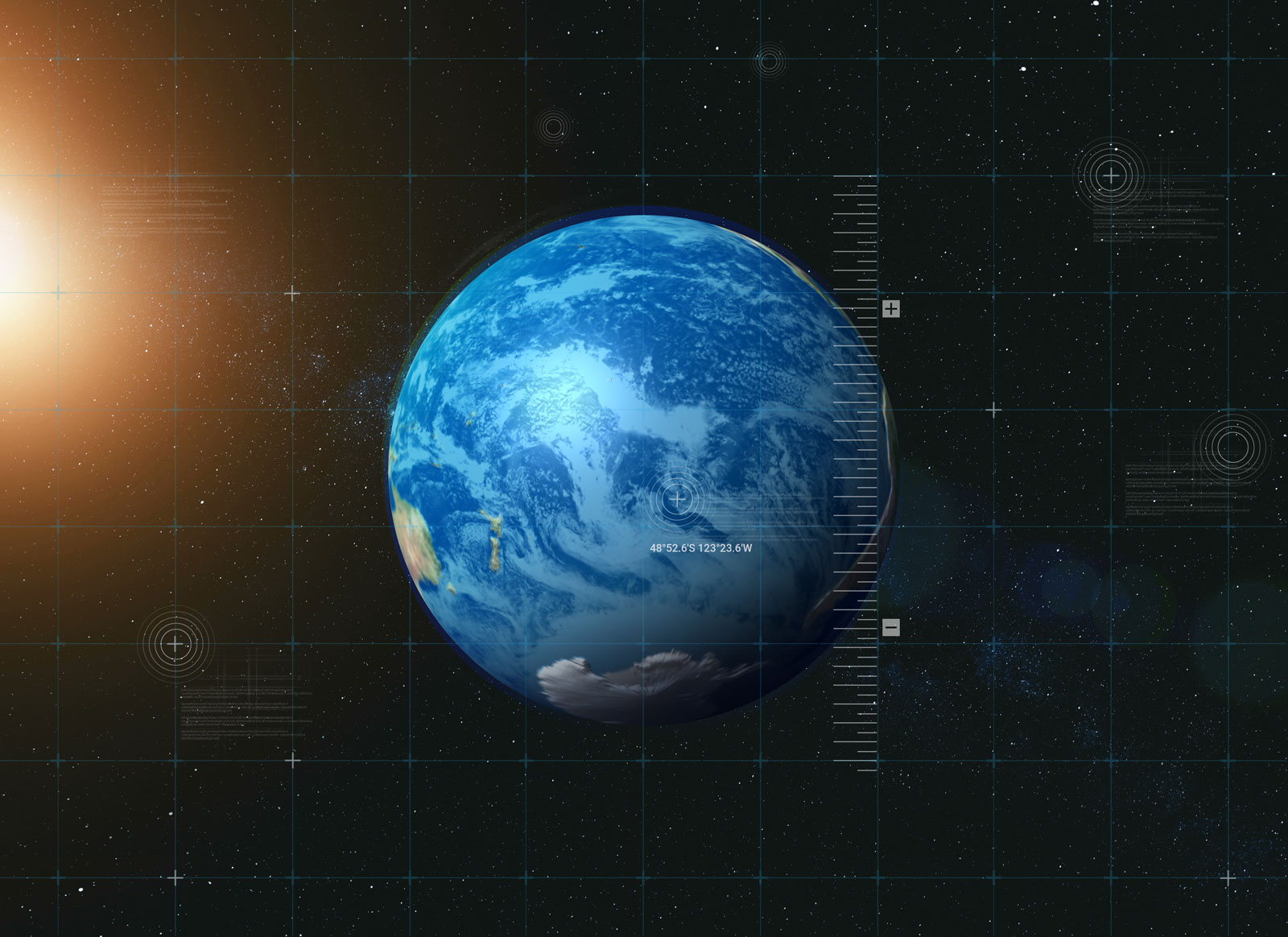Seatrec Wins Power at Sea Prize for Bold Plan to Map World’s Marine Resources Using Ocean’s Own Power
Seatrec Wins Power at Sea Prize for Bold Plan to Map World’s Marine Resources Using Ocean’s Own Power
Sustainably-powered autonomous float equipped with an active acoustic echosounder will map upper ocean pelagic habitats to address the critical knowledge gap in marine living resource distribution on a planetary scale
VISTA, Calif. – WEBWIRE – Thursday, December 19, 2024. Seatrec, a renewable energy company that harvests energy from temperature differences in the environment, was named one of 20 winners of the U.S. Department of Energy’s (DOE’s) Powering the Blue Economy™: Power at Sea Prize. This recognition comes with a $10,000 award for the company’s groundbreaking concept: mapping the world’s marine resources using a subsea robot equipped with a side-looking echosounder and powered by the ocean’s thermal energy.
“Long-endurance data collection in remote areas of the ocean has always been restricted because batteries are insufficient and ships are too expensive to power high-end sensors like echosounders,” explains Yi Chao, Ph.D., Seatrec’s founder and CEO. “Our technology unlocks the ocean’s temperature differences to power those sensors, and the Power at Sea Prize helps fuel our vision of sustainable exploration to better understand our blue planet.”
Seatrec’s goal of developing a thermally-powered profiling float equipped with echosounder sensors will provide an innovative and critical path to map upper ocean pelagic habitats by measuring zooplankton, which plays a vital role in aquatic ecosystems and the planet’s overall health.
This echosounder float will profile as deep as 1,000 meters and surface every six hours, capturing diurnal variations at key times (sunrise, noon, sunset, and midnight). During ascent, the side-looking echosounder will map zooplankton and mesopelagic organisms smaller than 10 cm at various distances from the float. When sufficient thermal gradients exist, the energy harvesting system will convert temperature differences into electricity. Upon surfacing, the float will report its position and transmit data via satellite. Initial deployment is proposed for Monterey Bay, leveraging the area’s existing sustained observing system to validate this novel zooplankton measurement modality.
The Power at Sea Prize, one of DOE’s competitive programs, recognizes innovative marine energy concepts that could feasibly power blue economy applications, such as ocean-observing devices, aquaculture installations, and storm tracking systems. Twenty teams across the United States were awarded in this first CONCEPT Phase, competing for a total prize pool of $200,000.
Matthew Grosso, WPTO Director, praised the winners: “The CONCEPT Phase winners delivered the out-of-the-box ideas we were looking for as we work to harness the potential of marine energy for offshore applications. We look forward to seeing their progress in the prize’s next phase.”
Seatrec will advance to the DEVELOP Phase of the competition, where teams will refine their technologies with support from industry mentors, networking opportunities, and targeted training. Final winners will share a $1.5 million prize pool to further develop their innovations.
This recognition reinforces Seatrec’s commitment to driving sustainable innovation in ocean technology. With this award, the company continues its mission to contribute to a thriving blue economy while addressing critical challenges in ocean exploration and resource management.
For more information about Seatrec’s award-winning technology and ongoing initiatives, visit www.seatrec.com.
About Seatrec
Seatrec designs and manufactures energy harvesting systems that generate electricity from naturally occurring temperature differences in ocean waters. This renewable energy can be used to power deep water oceanographic research equipment such as floats, gliders, and autonomous underwater vehicles, resulting in the most scalable, cost-effective deep ocean data collection possible. The company is headquartered in Vista, CA. Visit us at www.seatrec.com and @seatrecinc.
Media Contact
Marta Bulaich
marta.bulaich@seatrec.com
+1 (415) 816-165
Seatrec Names Pentagon Alum Jason Stack to Advisory Board
Seatrec Names Pentagon Alum Jason Stack to Advisory Board
Extensive experience in developing and managing advanced autonomous naval and maritime systems will guide the commercialization and deployment of Seatec’s technology across the defense, research, and Blue Economy domains
VISTA, Calif. – WEBWIRE – Thursday, April 4, 2024. Seatrec, a renewable energy company that harvests energy from temperature differences in the environment, today announces the appointment of Jason Stack, Ph.D., an engineer and former Deputy Director of the Navy’s Unmanned Task Force at the Pentagon, to its advisory board.
“We’re rapidly commercializing autonomous systems powered by the ocean’s temperature differences for critical research and defense, as well as those that will help expand the Blue Economy,” points out Yi Chao, Ph.D., CEO and founder of Seatrec. “Jason’s unparalleled expertise gained from a distinguished career in the US Navy is a tremendous resource to help us accomplish our mission.”
Stack’s time at the Pentagon included multiple formal appointments within NATO including the US National Representative for Systems, Concepts, and Integration within the NATO Science & Technology Organization. Following his role at the Pentagon, he is co-founding a startup in the maritime space - still in stealth - and works as the company’s CTO.
He began his career designing and prototyping heavy equipment and industrial electronics at two manufacturing companies before earning his Ph.D. and moving to the Department of Defense (DoD). During his two-decade career at the DoD, Stack led programs at the Office of Naval Research (ONR) in maritime platform, sensor, perception, effector, and autonomy development. He then transitioned to an executive role where he acted as ONR’s Technical Director and served as director of the Ocean, Atmosphere, and Space Research Division before taking up his post at the Pentagon.
“Autonomous systems hold great potential for filling important capability gaps across a host of research, defense, and maritime missions but a reliance on batteries limits their endurance,” explains Stack. “Seatrec’s technology provides abundant power that is clean and sustainable to free those systems to reach their potential by providing robust function sets with near limitless endurance.”
Seatrec’s pioneering energy harvesting system uses phase change materials to harness energy from temperature differences between the ocean’s various depths. These materials contract and expand creating pressure that’s captured and converted into electricity. The clean, virtually limitless power enables scientists to integrate power-intensive sensors into its infiniTE™ float that were previously restricted by battery capabilities and lifespans.
Seatrec counts the US Navy’s Office of Naval Research among its early backers and in 2022 launched a project in partnership with the Naval Postgraduate School to integrate hydrophones into autonomous, ocean-going robots.
In 2023, the company was selected for the National Security Innovation Network (NSIN) Propel Hawai’i Accelerator. The program is a partnership between the NSIN and Decisive Point in collaboration with the U.S. Navy’s Pacific Fleet—the world’s largest fleet command encompassing 100 million square miles. Seatrec was selected from a competitive field of over 200 early-stage companies to join an elite cohort of enterprises developing cutting-edge technologies to help the modernization needs of the US Navy and the broader DoD community.
About Seatrec
Seatrec designs and manufactures energy harvesting systems that generate electricity from naturally occurring temperature differences in ocean waters. This renewable energy can be used to power deep water oceanographic research equipment such as floats, gliders, and autonomous underwater vehicles, resulting in the most scalable, cost-effective deep ocean data collection possible. Incorporated in 2016 by CEO, Dr. Yi Chao, Seatrec’s technology originated at NASA Jet Propulsion Laboratory, California Institute of Technology, to provide clean power for remote off-grid locations. The company is headquartered in Vista, CA. Visit us at www.seatrec.com and @seatrecinc.
Media Contact
Sean Yokomizo
Seatrec, Inc.
sean.yokomizo@seatrec.com
+1 925.878.1200
###
Seatrec Names Retired Rear Admiral John Neagley to Advisory Board
Seatrec Names Retired Rear Admiral John Neagley to Advisory Board
The 35-year veteran of the US Navy brings unique experience in leading organizations and teams in developing and operationalizing complex maritime technologies with particular focus on the Blue Economy
Seatrec, a renewable energy company that harvests energy from temperature differences in the environment, today announces the appointment of retired Rear Admiral and Founder/Principal of Blue Native Consulting, John Neagley, to its advisory board.
“John’s long and distinguished career in the Navy saw him successfully lead complex operations and the development of new technologies amid high stakes and high standards,” explains Yi Chao, Ph.D., CEO and founder of Seatrec. “His understanding of what it takes to succeed in a maritime environment and his passion for developing the Blue Economy is a perfect fit with our mission of providing clean, renewable energy to existing and novel applications.”
Neagley’s three-and-a-half decades of experience in the Navy saw him command a Navy Destroyer and serve on a number of surface combatants, including those that participated in Operations Iraqi Freedom, Enduring Freedom, and Desert Fox. Following his time at sea, Neagley managed a host of Naval research, development, and procurement projects, including acting as the executive officer for Littoral Combat Ships (PEO LCS). Before his retirement, he oversaw the Program Executive Office, Unmanned and Small Combatants (PEO USC) that set the course and scope of responsibilities for both manned and unmanned systems.
“The maritime environment is demanding and providing clean, renewable power to the most remote areas has always been a limiting factor,” points out Neagley. “Seatrec’s technology opens up exciting possibilities for maritime applications and for expanding the Blue Economy.”
Seatrec’s pioneering energy harvesting system uses phase change materials to harness energy from temperature differences between the ocean’s various depths. These materials contract and expand creating pressure that’s captured and converted into electricity. The clean, virtually limitless power enables scientists to integrate power-intensive sensors into its infiniTE™ float that typically require shore-supplied power or direct ship support via tethering.
The company counts the US Navy’s Office of Naval Research among its early backers and recently launched a project in partnership with the Naval Postgraduate School to study the impact of noise pollution on the ocean environments powered by Seatrec’s technology.
About Seatrec
Seatrec designs and manufactures energy harvesting systems that generate electricity from naturally occurring temperature differences in ocean waters. This renewable energy can be used to power deep water oceanographic research equipment such as floats, gliders, and autonomous underwater vehicles, resulting in the most scalable, cost-effective deep ocean data collection possible. Incorporated in 2016 by CEO, Dr. Yi Chao, Seatrec’s technology originated at NASA Jet Propulsion Laboratory, California Institute of Technology, to provide clean power for remote off-grid locations. The company is headquartered in Vista, CA. Visit us at www.seatrec.com and @seatrecinc.
Media Contact
Sean Yokomizo
Seatrec, Inc.
sean.yokomizo@seatrec.com
+1 925.878.1200
###
Seatrec and The USM Team to Improve Hurricane Forecasting and Monitor Critically Endangered Rice’s Whale
VISTA, Calif. – WEBWIRE – Wednesday, May 17, 2023. Seatrec, a startup company unlocking clean, renewable power for ocean research and commerce, and the Roger F. Wicker Center for Ocean Enterprise at The University of Southern Mississippi (USM), today announce the signing of a memorandum of understanding (MOU) aimed at improving hurricane rapid-intensification forecasting and monitoring critically endangered Rice’s whales in the Gulf of Mexico.
The MOU calls for the deployment of two types of Seatrec’s infiniTE™ floats each customized for different missions using the system’s first-of-its-kind modular design and clean, renewable power technology that harvests electricity from the ocean’s temperature differences.
One type of float will feature a suite of instruments to take measurements as frequently as three times per day to track water temperatures and other data that scientists believe contribute to the rapid intensification of hurricanes like Katrina, Irma, and Ian. The second type of float will operate with a passive acoustic hydrophone to monitor the endangered Rice’s whales with less than 100 remaining members of the species clustered in the Gulf’s northeastern waters.
“There is a critical need to better understand the Gulf of Mexico both in terms of its impact on humans in the form of extreme weather events and human impact on the marine life,” points out Yi Chao, Ph.D., the CEO and founder of Seatrec. “Having the flexibility to quickly and inexpensively deploy different mission-specific instrument suites on deep-diving, autonomous floats powered by a clean, renewable power source gives scientists like those at USM important tools to gather data not possible with previous technologies.”
Rice’s whales are members of the baleen whale family Balaenopteridae. With likely fewer than 100 individuals remaining, Rice’s whales are one of the most endangered whales in the world. Recovery of the species depends upon the protection of each remaining whale.
The MOU follows Seatrec’s completion of the six-month Gulf Blue Navigator program that is administered by USM and SeaAhead with partners, including Jackson State University. The program is designed to help scale blue technology startups.
“Power has long been a limiting factor that often restricts the types of instruments deployed in the ocean, how long they can last, and the amount of persistent data they can collect,” explains Dr. Kelly Lucas, USM’s Vice President for Research. “Seatrec’s ability to provide clean, renewable power to vertically integrated and modular instrument suites opens the door to a host of applications that will help us better understand and protect the ocean.”
Added Hailey Bathurst, Program Manager for the Gulf Blue Navigator, “Seatrec exemplifies what the Navigator program is meant to do: help blue tech startups find traction in the Gulf of Mexico, work with the core facilities at USM, and plug into a supportive ecosystem. This MOU and the others being finalized between USM and the inaugural Gulf Blue Navigator cohort members truly represents the potential of the program.”
The Roger F. Wicker Center for Ocean Enterprise serves a global hub for advancing Uncrewed Maritime Systems, ocean data science, maritime cyber research, and blue tech workforce training. The 62,500-square-foot center consists of multiple facilities bringing together federal, industry, and academic partners, creating a collaborative environment to accelerate the development and launch of new technology in the fast-growing ocean economy.
Entrepreneurs and startups developing solutions to global challenges utilize the center to capitalize on world-class ocean research capabilities and connect to university research scientists.
“The Gulf Blue Navigator program has already begun to make an economic impact to the Mississippi Gulf Coast,” said Dr. Jason McKenna, Director of Research, Development, Testing, Evaluation & Training at the Wicker Center. “This is the first of many follow-on initiatives between USM’s world-class research centers and the Navigator’s program’s first graduating cohorts and demonstrates the ability of our coastal research ecosystem to partner with and help grow blue technology in Mississippi.”
Seatrec’s pioneering energy harvesting system uses phase change materials to harness energy from temperature differences between the ocean’s various depths. These materials contract and expand creating pressure that’s captured and converted into electricity. The clean, virtually limitless power frees scientists to use sensors that typically require shore-supplied power or direct ship support via tethering. The infiniTE™ float platform’s “plug-and-play” modularity vertically integrates different sensors tailored to particular areas of study.
Hurricane Forecasting
Better understanding the rapid intensification of major storms and hurricanes is a particularly pressing goal as annual economic losses from such storms are estimated at $54B. Traditional floats (commonly known as Argo) typically only profile once every 10 days, which is insufficient to measure the intensification of storms that can surge in as little as 24 hours. Seatrec’s infiniTE™ floats are able to sample as frequently as three times per day providing 30x more data than the standard Argo floats.
Whale Monitoring
Studies show that noise from humans adversely affects a broad range of organisms including marine mammals. Hydrophones are needed to quantify the impact of these noises on marine mammals. Hydrophones mounted on Seatrec’s infiniTE™ floats provide an inexpensive, autonomous platform to gather soundscape data at varying depths for years at a time.
Seatrec will establish a long-term presence in the Gulf of Mexico to support the MOU missions with a satellite office provided by the Gulf Blue Navigator program while its headquarters will remain in Vista, California.
About Seatrec
Seatrec designs and manufactures energy harvesting systems that generate electricity from naturally occurring temperature differences in ocean waters. This renewable energy can be used to power deep water oceanographic research equipment such as floats, gliders, and Autonomous Underwater Vehicles (AUVs), resulting in the most scalable, cost-effective deep ocean data collection possible. Incorporated in 2016 by CEO, Dr. Yi Chao, Seatrec’s technology originated at NASA Jet Propulsion Laboratory, California Institute of Technology, to provide clean power for remote off-grid locations. The company is headquartered in Vista, CA. Visit us at www.seatrec.com and @seatrecinc.
About The University of Southern Mississippi
The University of Southern Mississippi (USM) is a comprehensive public research institution delivering transformative programs on campuses in Hattiesburg and Long Beach, at teaching and research sites across the Mississippi Gulf Coast, as well as online. Founded in 1910, USM is one of only 146 universities in the nation to earn the Carnegie Classification of Institutions of Higher Education’s "R1: Doctoral Universities – Very high research activity” designation and its robust research enterprise includes experts in ocean science and engineering, polymer science and engineering, and large event venue safety and security, among others. USM is also one of only 36 institutions in the nation accredited in theatre, art and design, dance and music. As an economic driver, USM generates an annual economic impact of more than $663 million across the state. USM welcomes a diverse student body of more than 13,500, representing more than 70 countries, all 50 states, and every county in Mississippi. USM students have collected four Truman Scholarships and 37 National Science Foundation Graduate Research Fellowships, while also leading Mississippi with 27 Goldwater Scholarships, an honor that recognizes the next generation of great research scientists. Home to the Golden Eagles, USM competes in 17 Division I sports sponsored by the National Collegiate Athletic Association (NCAA). For more information, visit usm.edu.
Contact Information:
Sean Yokomizo
Media Relations/Communications
Seatrec, Inc.
925.878.1200
sean.yokomizo@seatrec.com
Here is the official press release.
Seatrec and Seabed 2030 Launch Project NEMO, the “Last Great Expedition” to Map Ocean’s Most Remote Spot
Autonomous profiling floats equipped with echosounders will map the ocean near Point Nemo – the farthest point in the ocean from land
VISTA, Calif. – WEBWIRE – Wednesday, March 23, 2022. Seatrec and The Nippon Foundation-GEBCO Seabed 2030 Project today announce Project NEMO (Novel Echosounder to Map the Ocean) via a memorandum of understanding to map the area in the ocean farthest from land near Point Nemo. The project marks one of the last great expeditions to explore the most remote and mysterious area on the planet in the spirit of efforts to chart unknown regions of the Amazon and poles during previous centuries.
“Point Nemo is particularly challenging and expensive to study and map because it’s 2,688 kilometers (1,670 miles) from the nearest land, which makes it emblematic of the difficulties that scientists face in understanding and mapping the ocean as a whole,” explains Yi Chao, Ph.D., CEO and Founder of Seatrec. “Successfully deploying technology that can accurately and inexpensively map the most remote point in the ocean will help us chart a way forward to the world’s first high-resolution map of the seafloor.”
Just over 20% of the seafloor is mapped at high-resolution leaving an area roughly equivalent to the surface of Mars uncharted. Knowledge of the ocean’s topography provides basic information for science, economy, education, management and geopolitics. Applications as diverse as climate modeling, tsunami forecasting, marine protection and management, communication cable and pipeline planning, all require reliable seafloor maps.
Seabed 2030 – a flagship program of the United Nations Decade of Ocean Science for Sustainable Development (2021-2030) – addresses that vital need through an international effort to facilitate the complete mapping of the seafloor by 2030.
“Mapping the seafloor will have a direct impact on the future of our planet, and as a result, that of humanity,” says Jamie McMichael-Philips, Seabed 2030 Project Director. “Cutting-edge technology like Project NEMO is critical to helping us achieve our goal of mapping the seafloor by 2030. ”
Experts estimate that it will cost up to $5B to map the 80% uncharted seafloor using traditional methods such as ships that burn diesel fuel and emit carbon dioxide into the atmosphere. Seatrec’s transformative technology harvests energy from the ocean temperature difference and provides a cost-effective and sustainable solution to deploy a fleet of subsea robots at a fraction of the cost of ships.
Leading Project NEMO is seafloor mapping pioneer Larry Mayer, Professor and Director of the Center for Coastal and Ocean Mapping at the University of New Hampshire.
“The clock is ticking on the international community’s unprecedented effort to map the seafloor so we can understand and protect the ocean’s resources,” emphasizes Mayer. “Next-generation ocean mapping technologies – like Seatrec’s – are vital to getting the data we need in a scalable and cost-effective way.”
About Seatrec
Seatrec designs and manufactures energy harvesting systems that generate electricity from naturally occurring temperature differences in ocean waters. This renewable energy can be used to power deep water oceanographic research equipment such as floats, gliders, and autonomous underwater vehicles, resulting in the most scalable, cost-effective deep ocean data collection possible. Incorporated in 2016 by CEO, Dr. Yi Chao, Seatrec’s technology originated at NASA Jet Propulsion Laboratory, California Institute of Technology, to provide clean power for remote off-grid locations. The company is headquartered in Vista, CA. Visit us at www.seatrec.com and @seatrecinc.
About The Nippon Foundation-GEBCO Seabed 2030 Project
Seabed 2030 is a collaborative project between The Nippon Foundation of Japan and the General Bathymetric Chart of the Oceans (GEBCO). It aims to bring together all available bathymetric data to produce the definitive map of the world ocean floor by 2030 and make it available to all. The project was launched at the United Nations (UN) Ocean Conference in June 2017 and is aligned with the UN’s Sustainable Development Goal #14 to conserve and sustainably use the oceans, seas and marine resources. For information visit: seabed2030.org.
Media contacts
Sean Yokomizo
Seatrec
sean.yokomizo@seatrec.com
+1 925.878.1200
Pegah Souri
Seabed 2030
pegah@raittorr.co.uk
+44 (0)7951 581707
###

